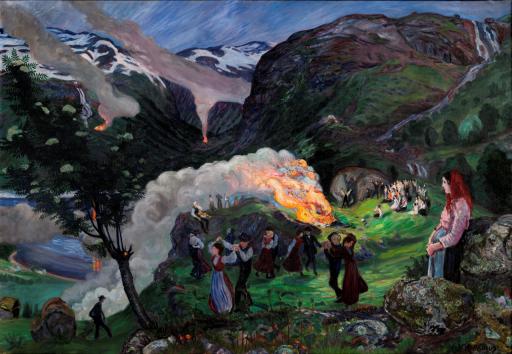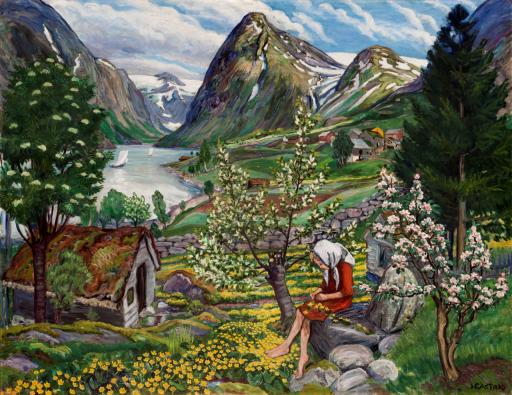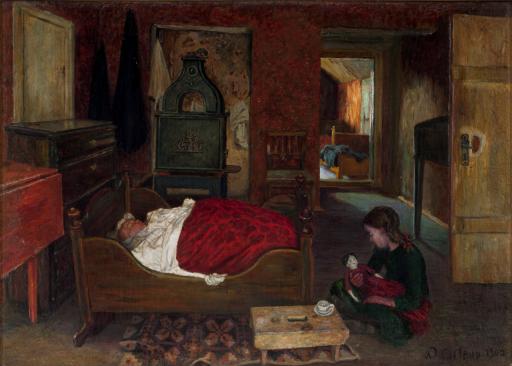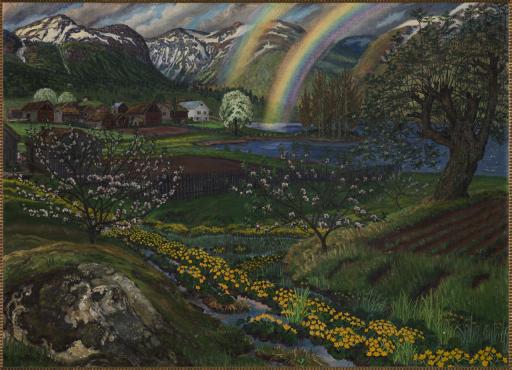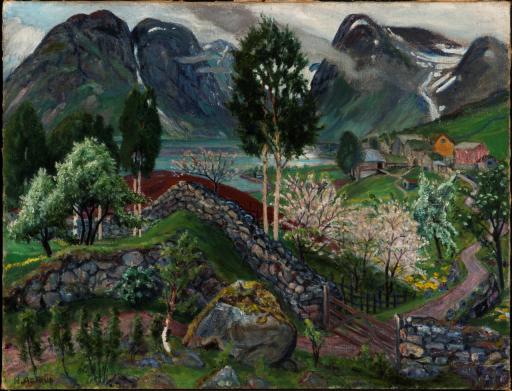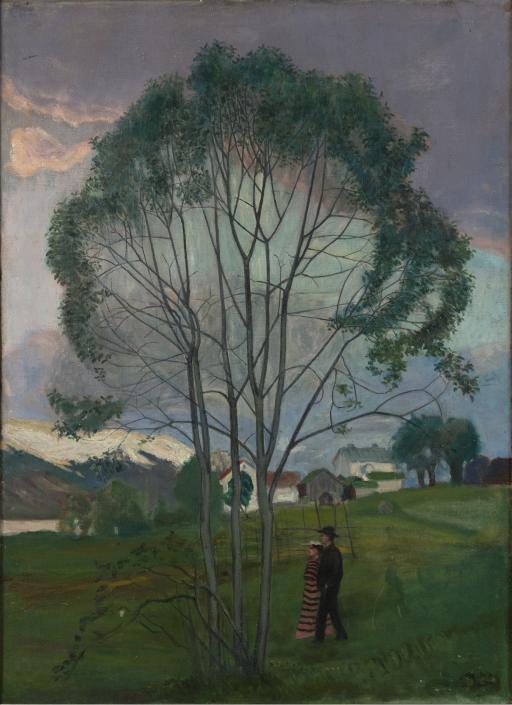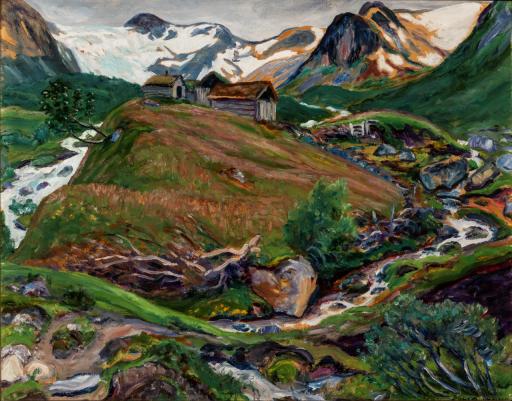The first regional West Norway Exhibition was arranged in Bergen Art Society in 1922. The initiative came from the art historian Einar Lexow, whose plan was to bring together and draw attention to the West Norwegian art scene. The public was encouraged to buy works in an effort to support the artists during difficult economic times. The exhibition was curated by Lexow, together with the artist Axel Revold. Thirty-six painters residing in Bergen and the surrounding counties participated, with a total of 124 works.
The mounting of the exhibition was based a new and unexpected principle for the Bergen public: the works were not hung alphabetically, as was the tradition and the standard used in the catalogue, with the result that they might find “a particular painter’s works spread at a great distance from each other”.
Astrup was heavily represented with 10 paintings, followed by Nils Krantz, Bernt Tunold and Hjørdis Landmark who presented eight paintings each. The remainder of the artists had fewer. In this way Astrup was highlighted as the most predominant artist from Western Norway, or in the words of the museum’s director Johan Bøgh: “Astrup is decidedly the exhibition’s crowning glory”.
To begin with Astrup was determined not to participate in the exhibition. According to Engel Astrup, a wager between herself and her husband ended with Astrup having to participate after all. His application was sent in on short notice – only fourteen days before the opening.
In connection with the exhibition, Bergens Tidende interviewed Bøgh, who stated that the exhibition should “become a fixed traditional institution in Bergen”. It has since, with few exceptions, been arranged annually and toured the West Norway counties, with its centennial in 2022.
The total number of visitors to the exhibition was 4905.
References
Bergens Kunstforening. Utstilling av vestlandsk malerkunst. Bergen: Bergens kunstforening, 1922.

